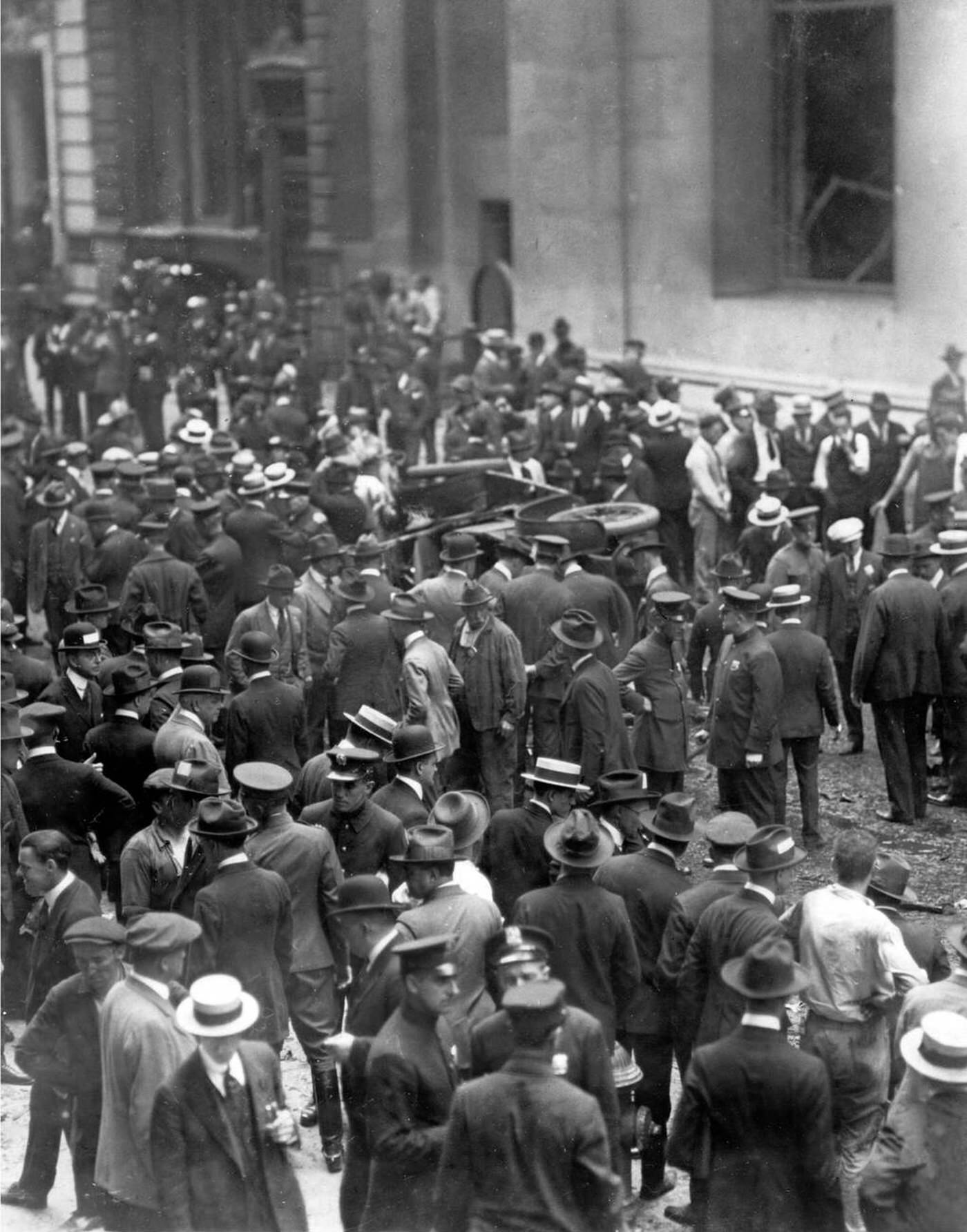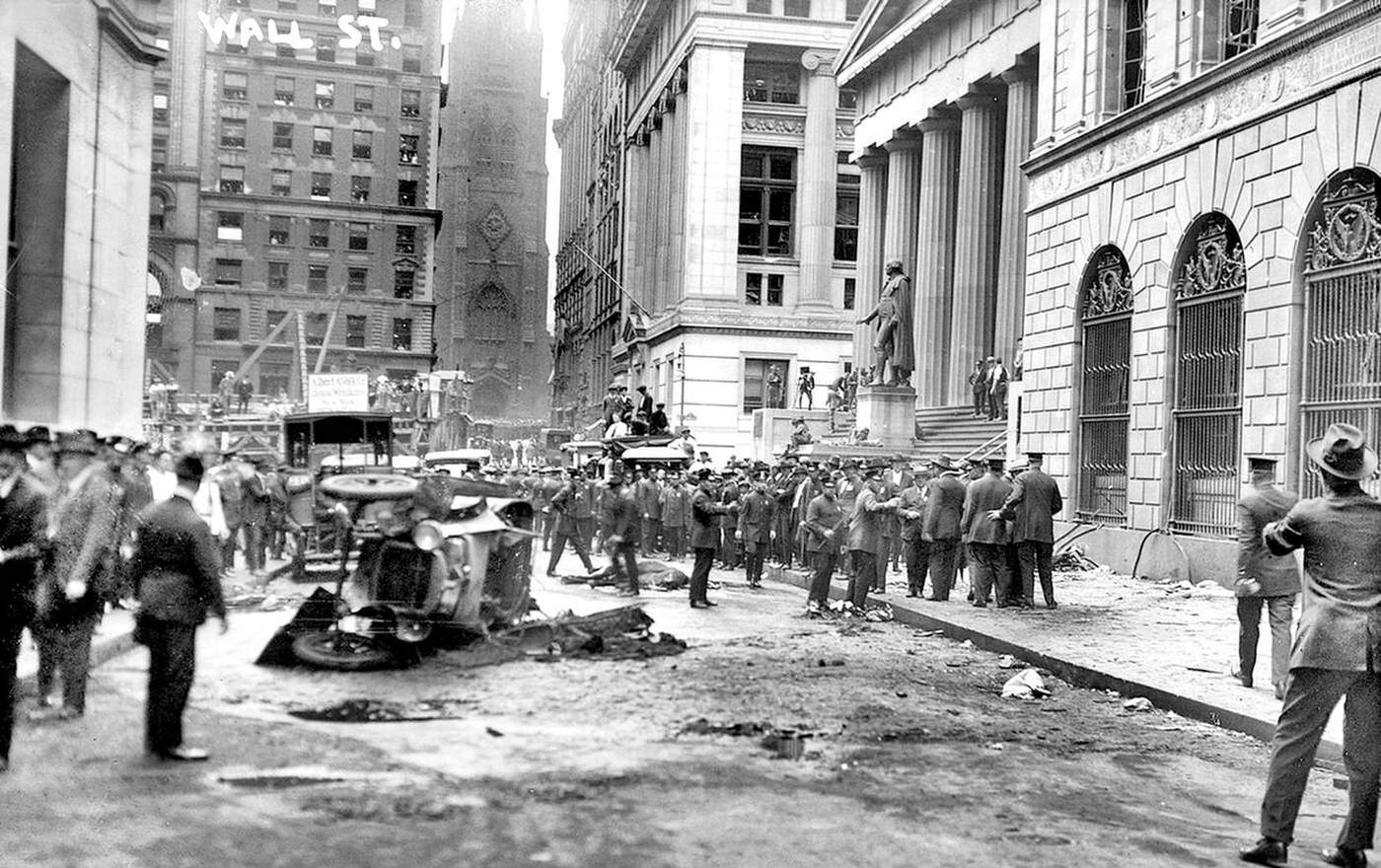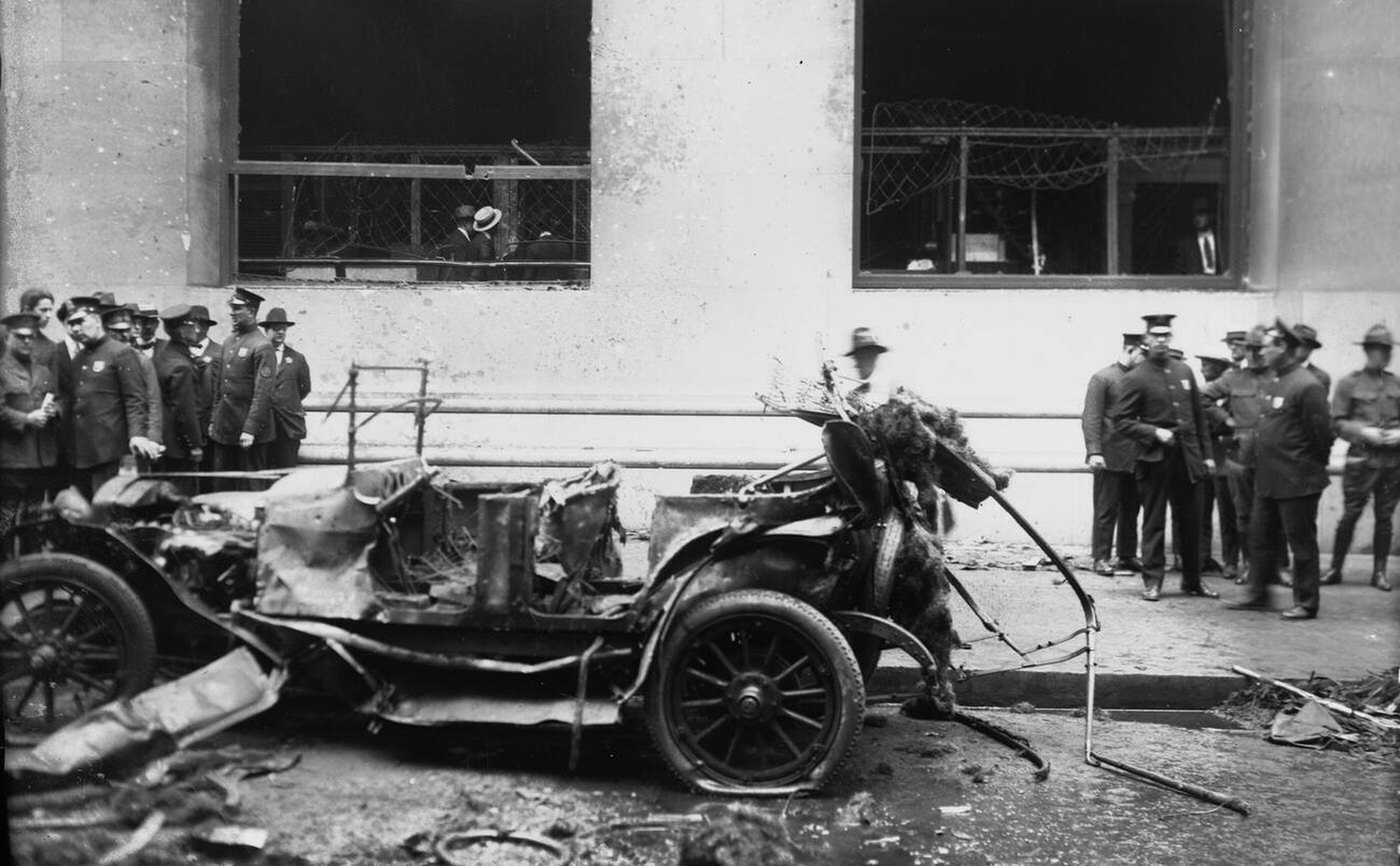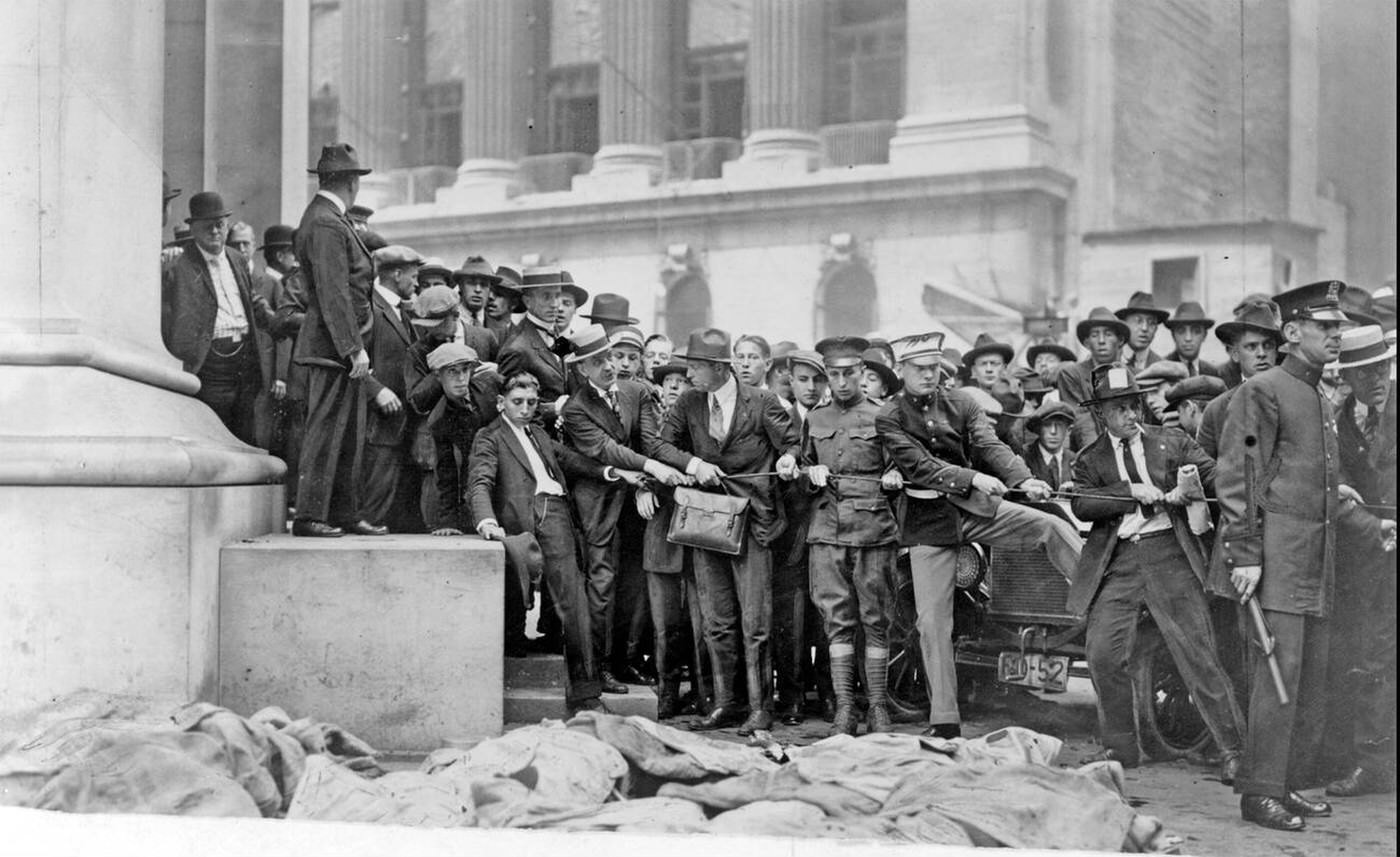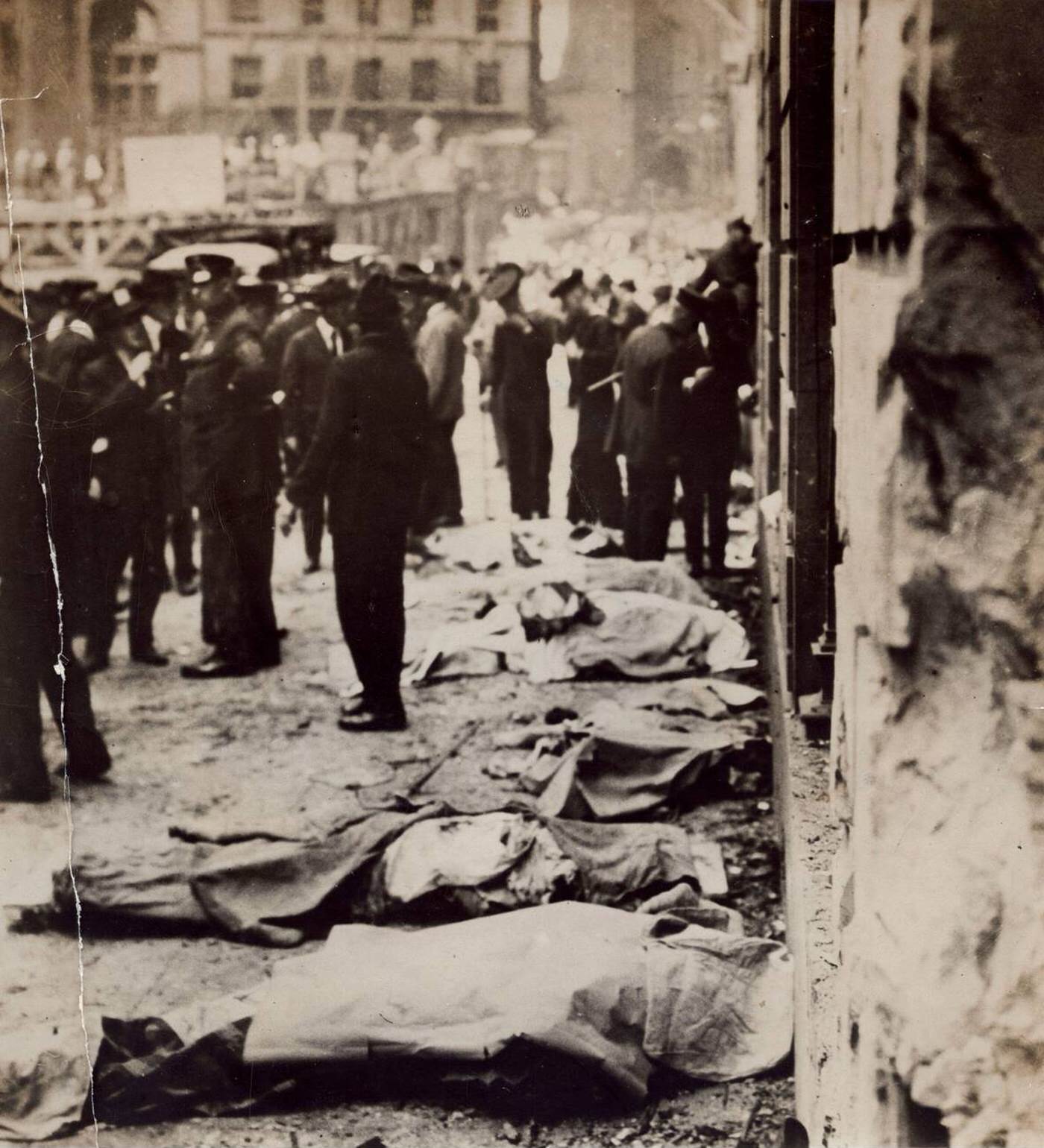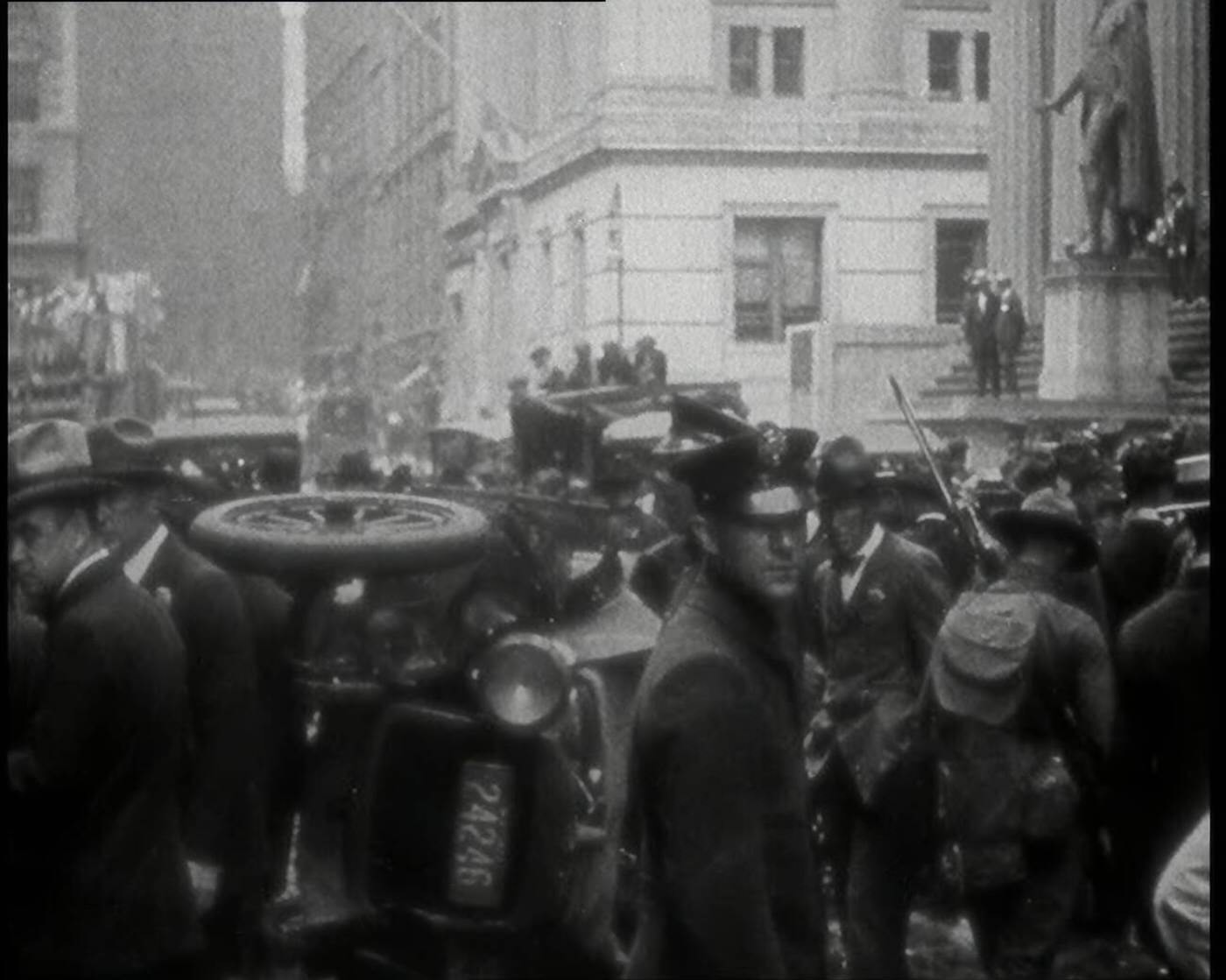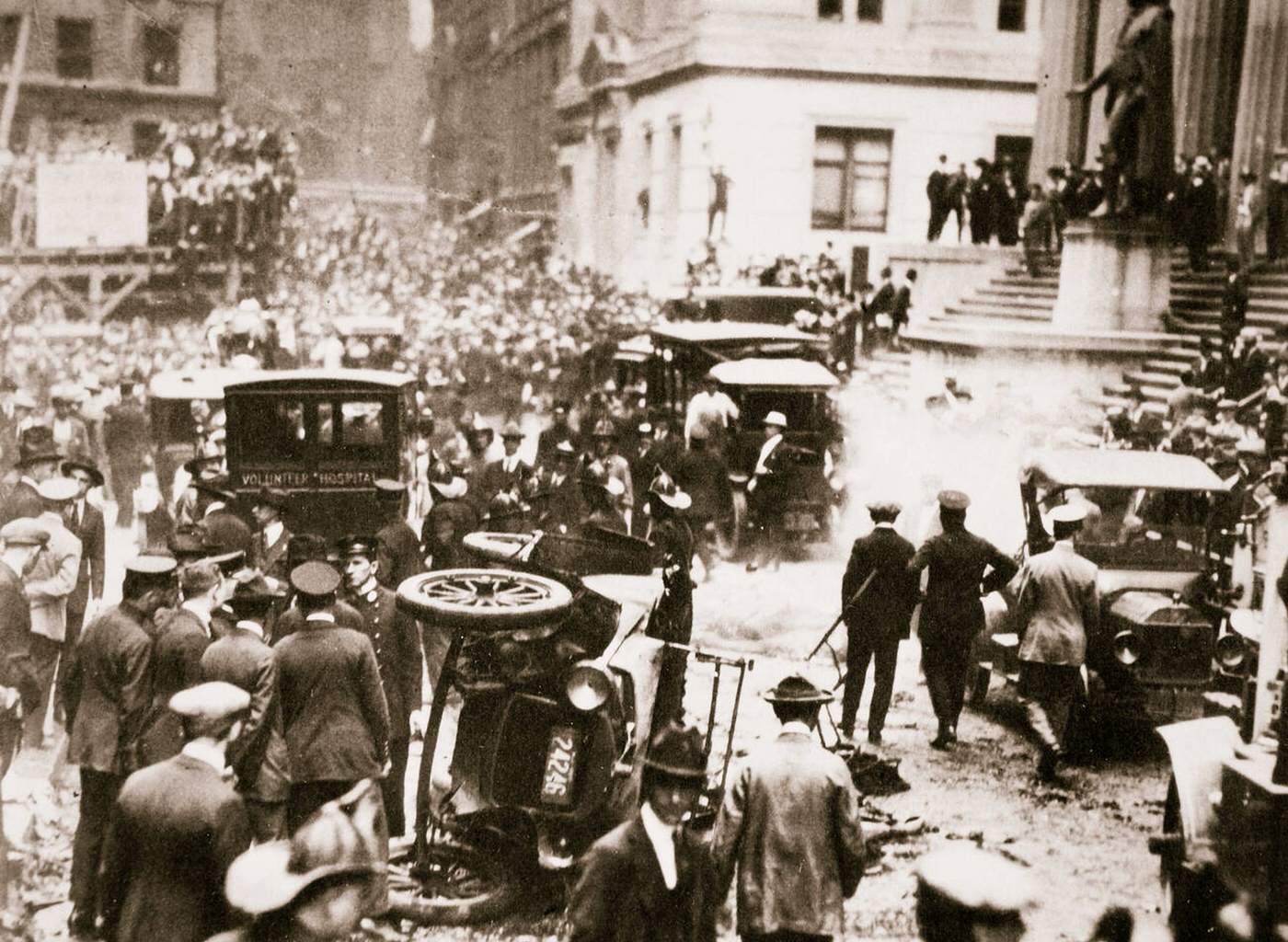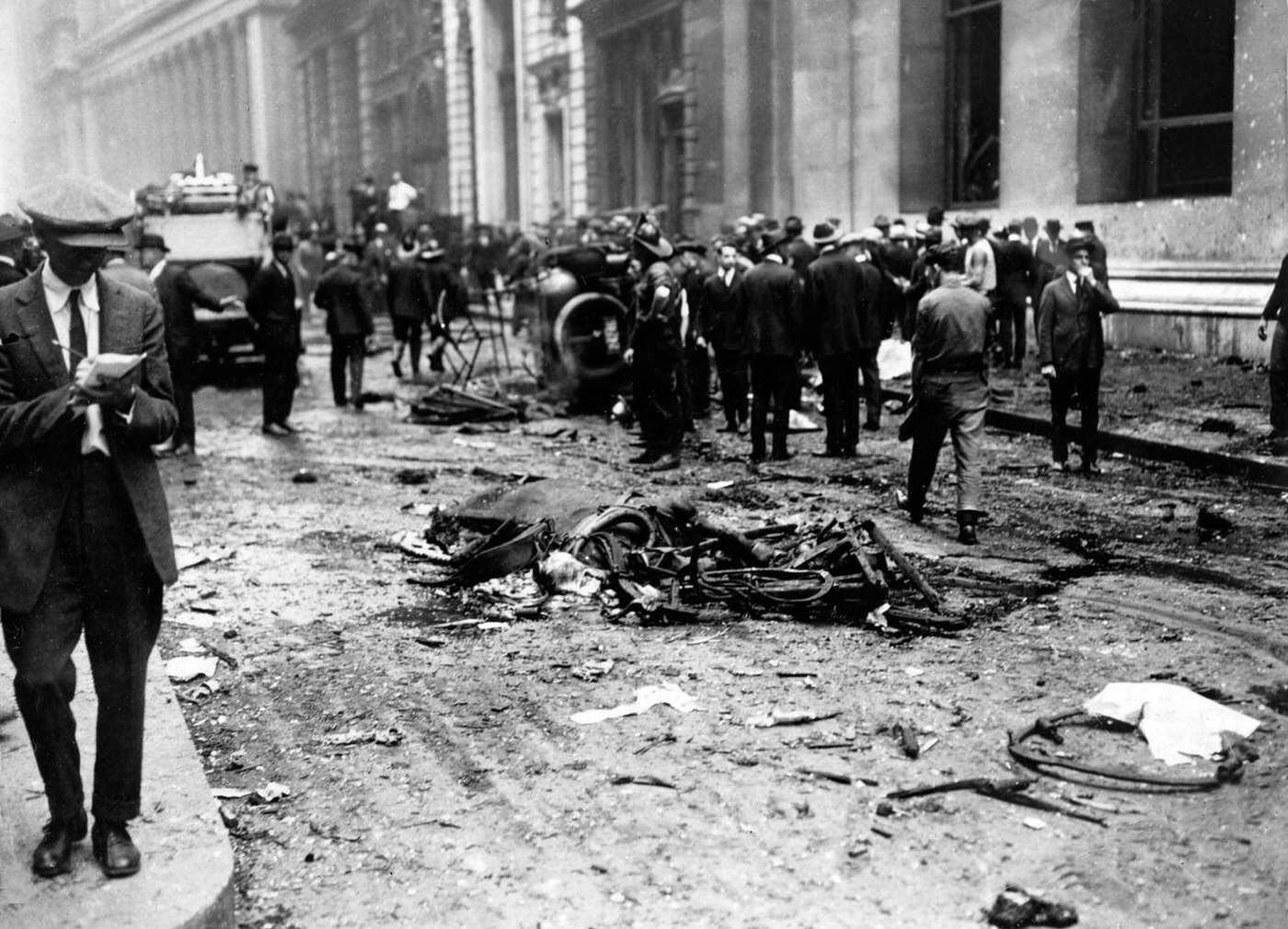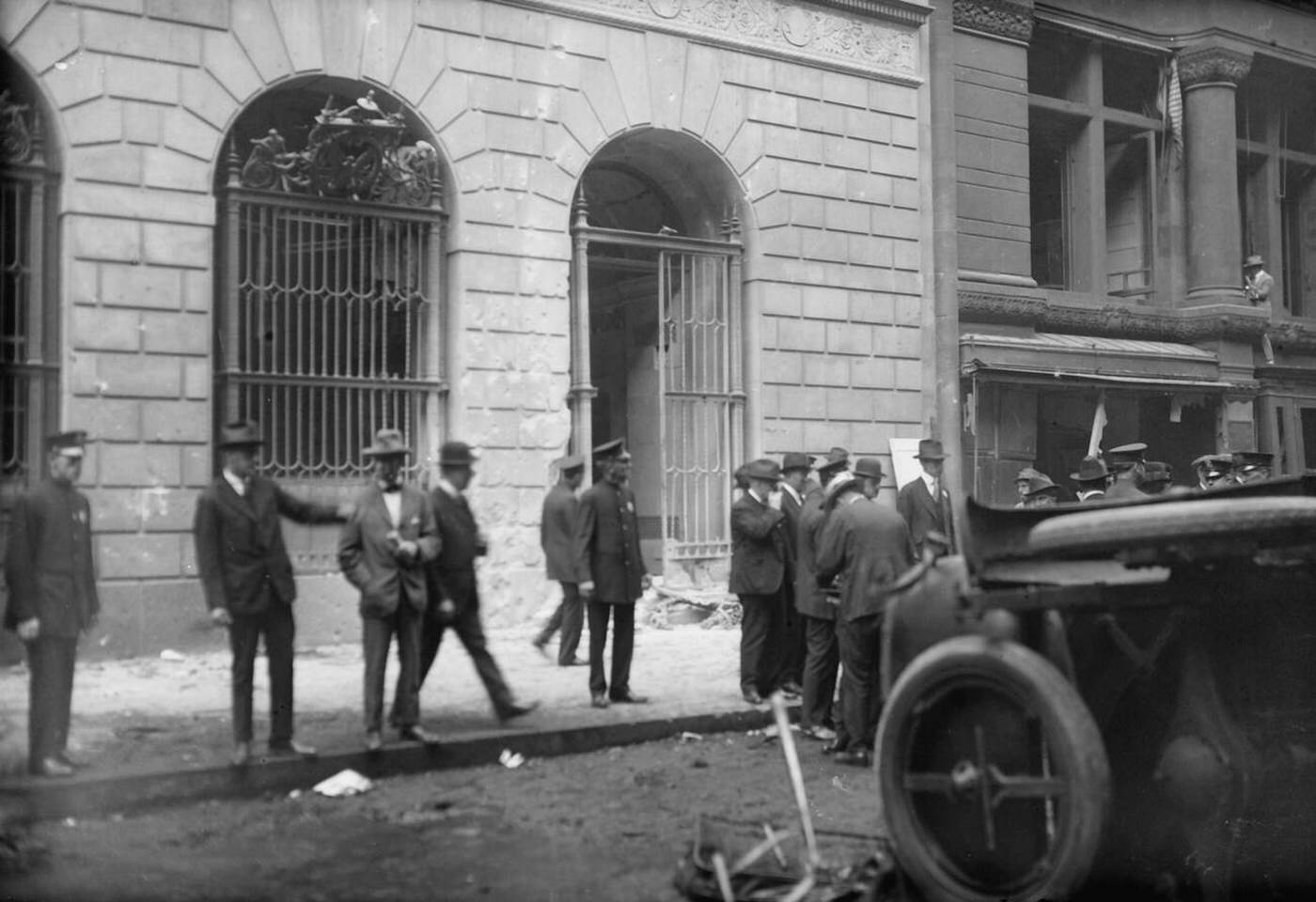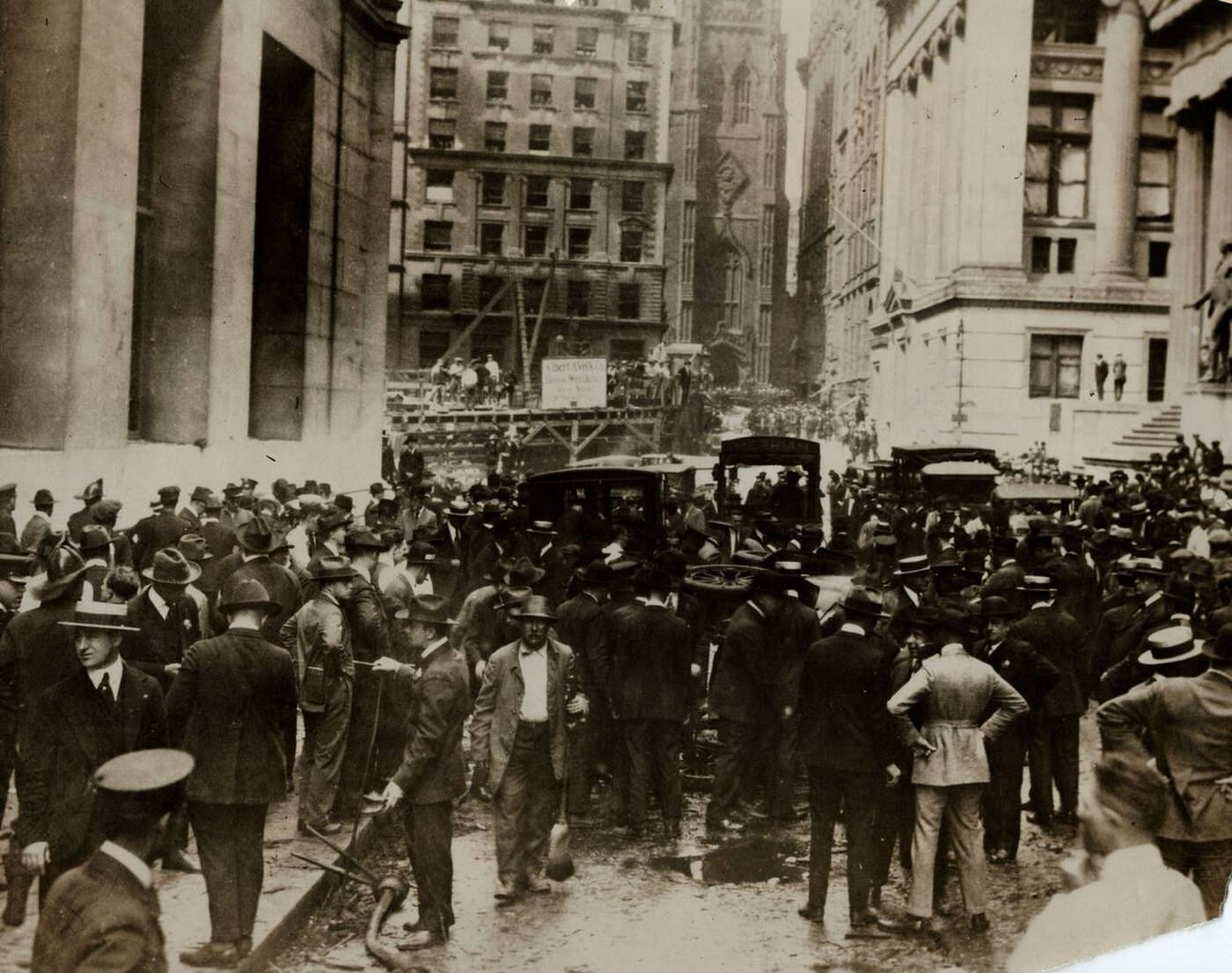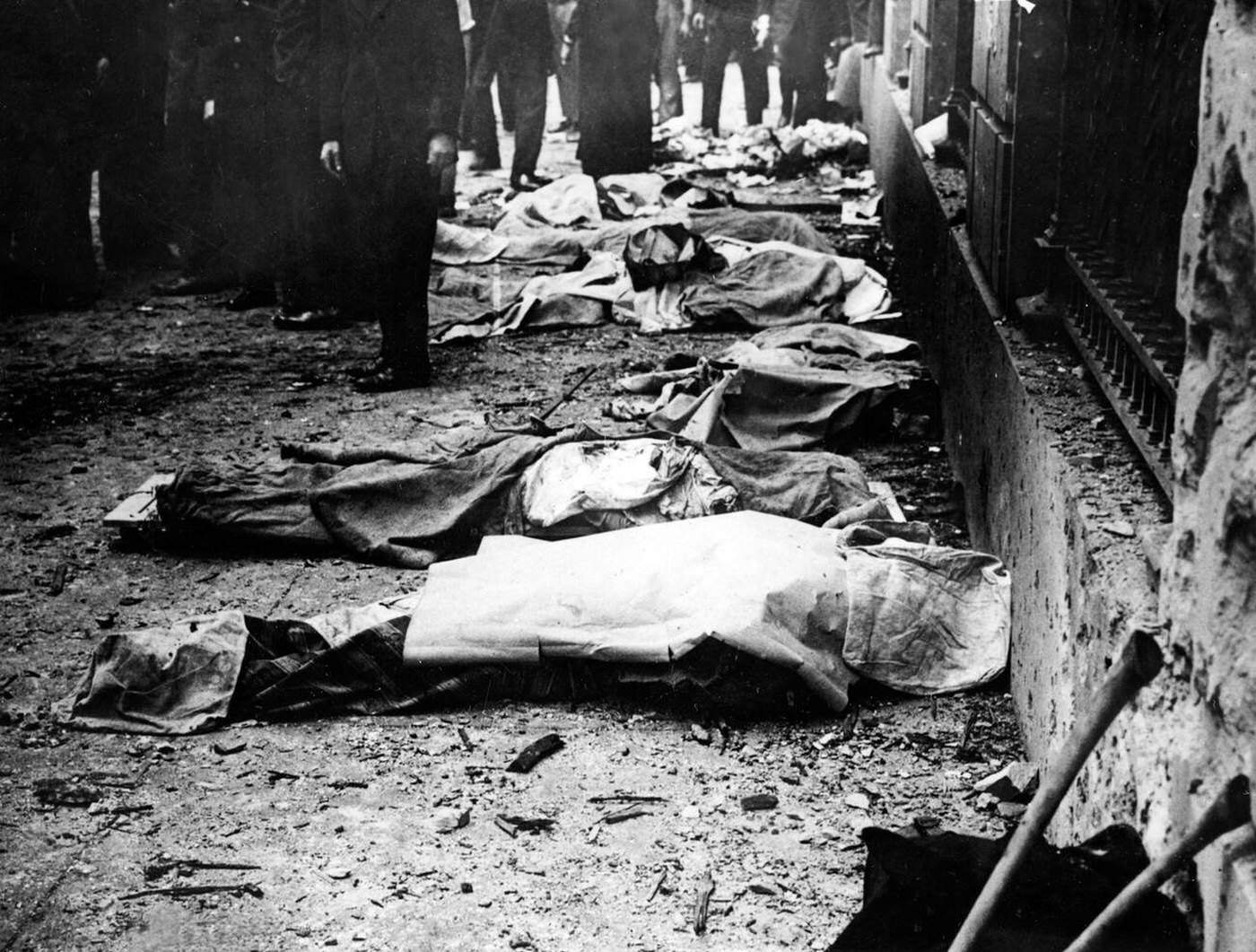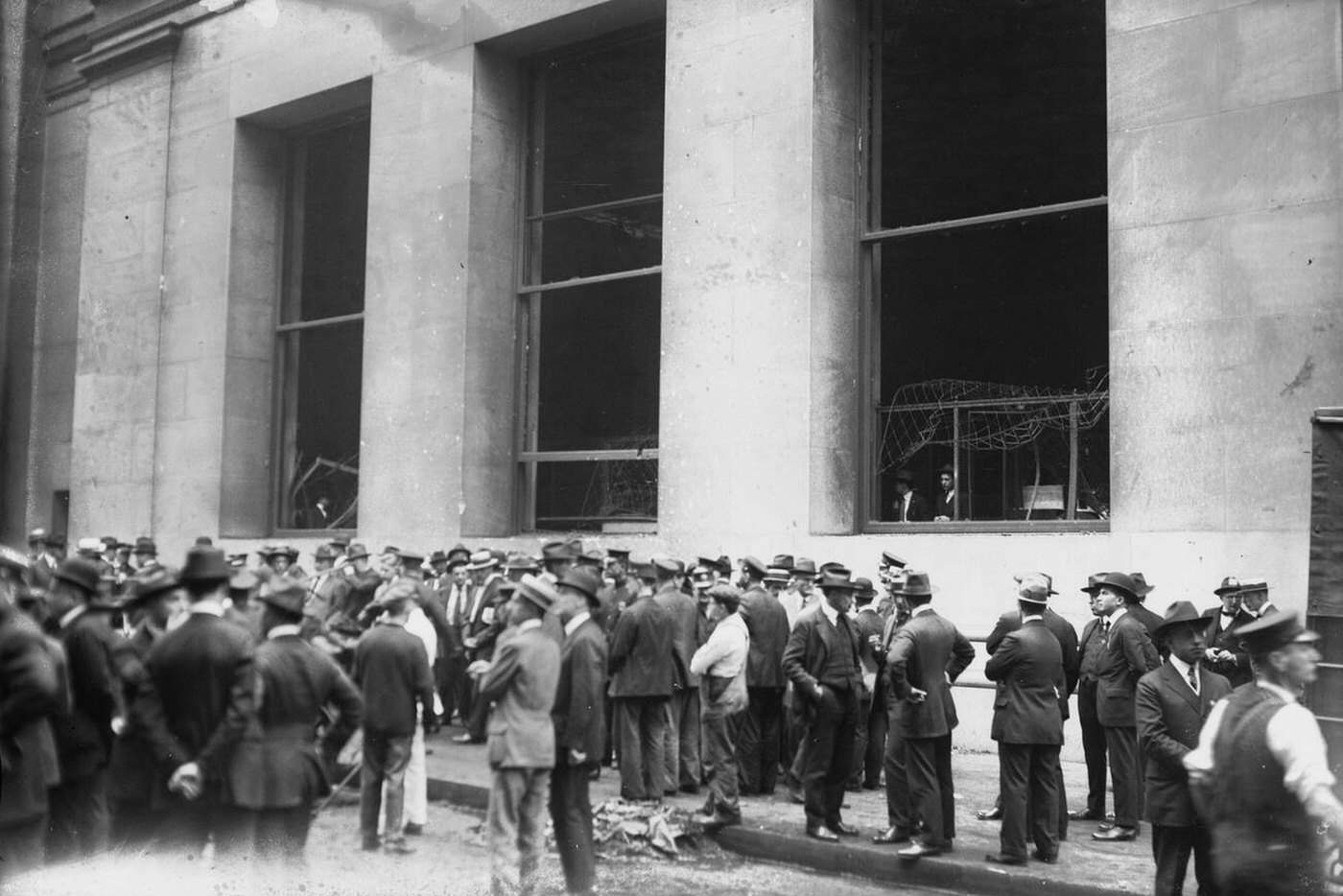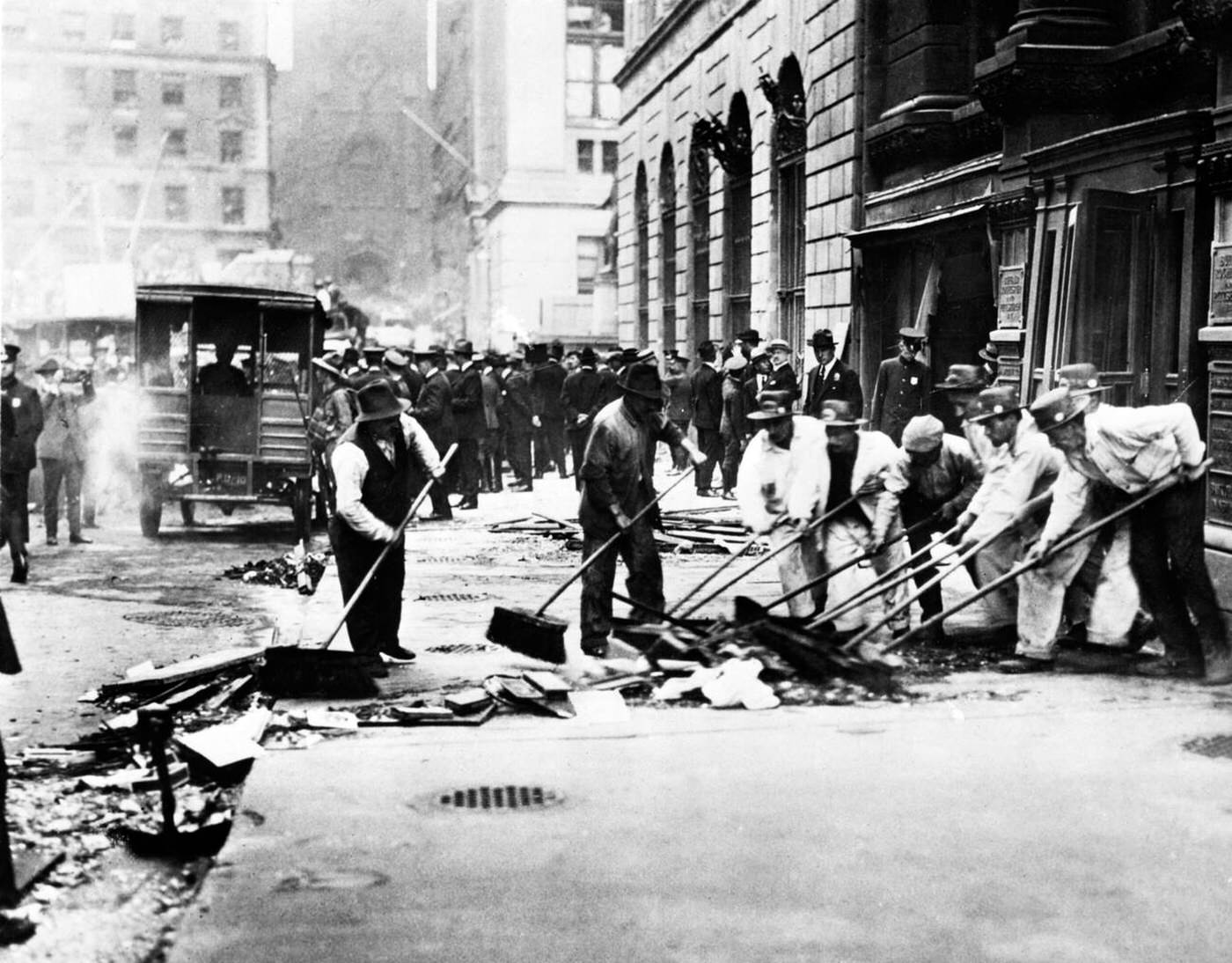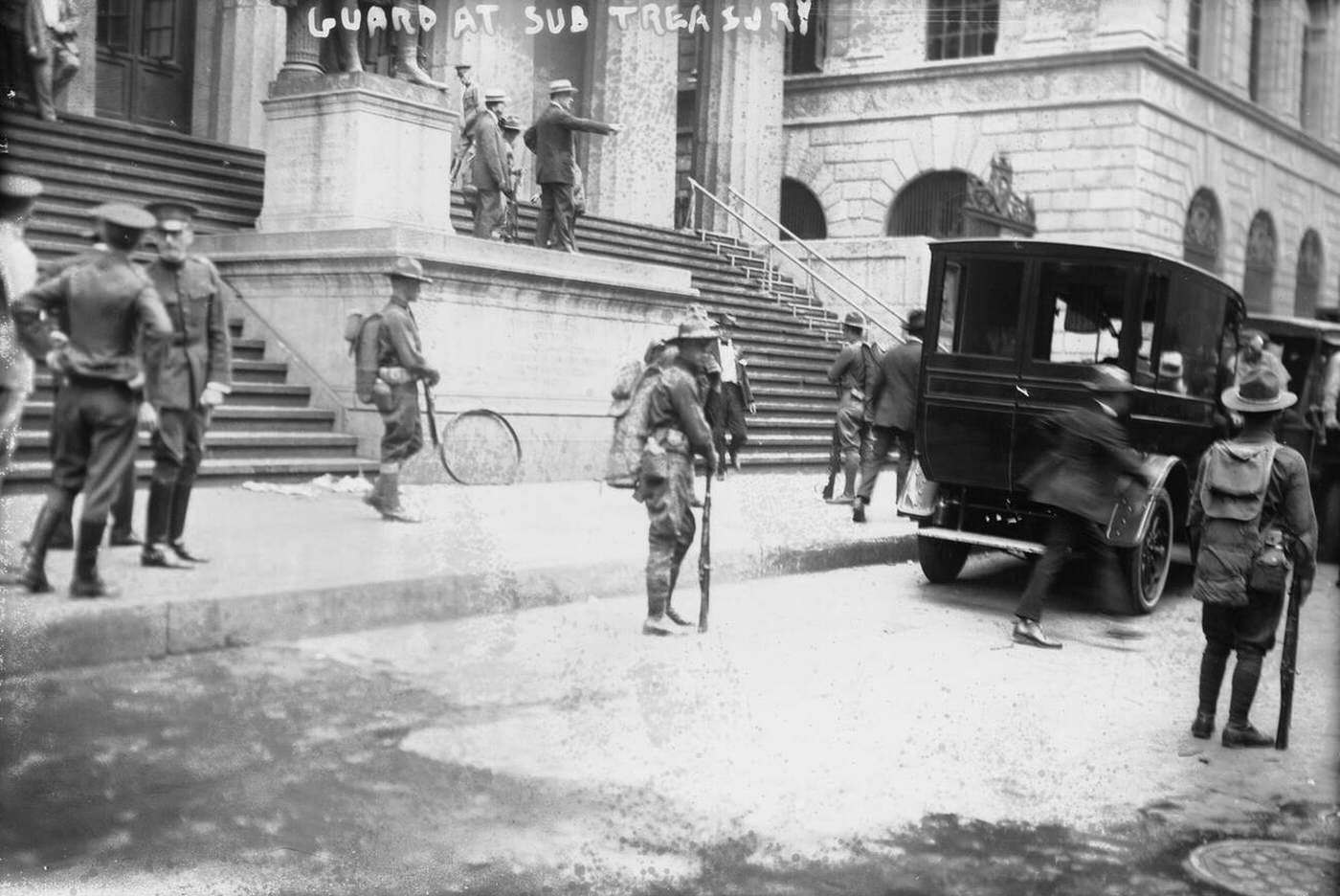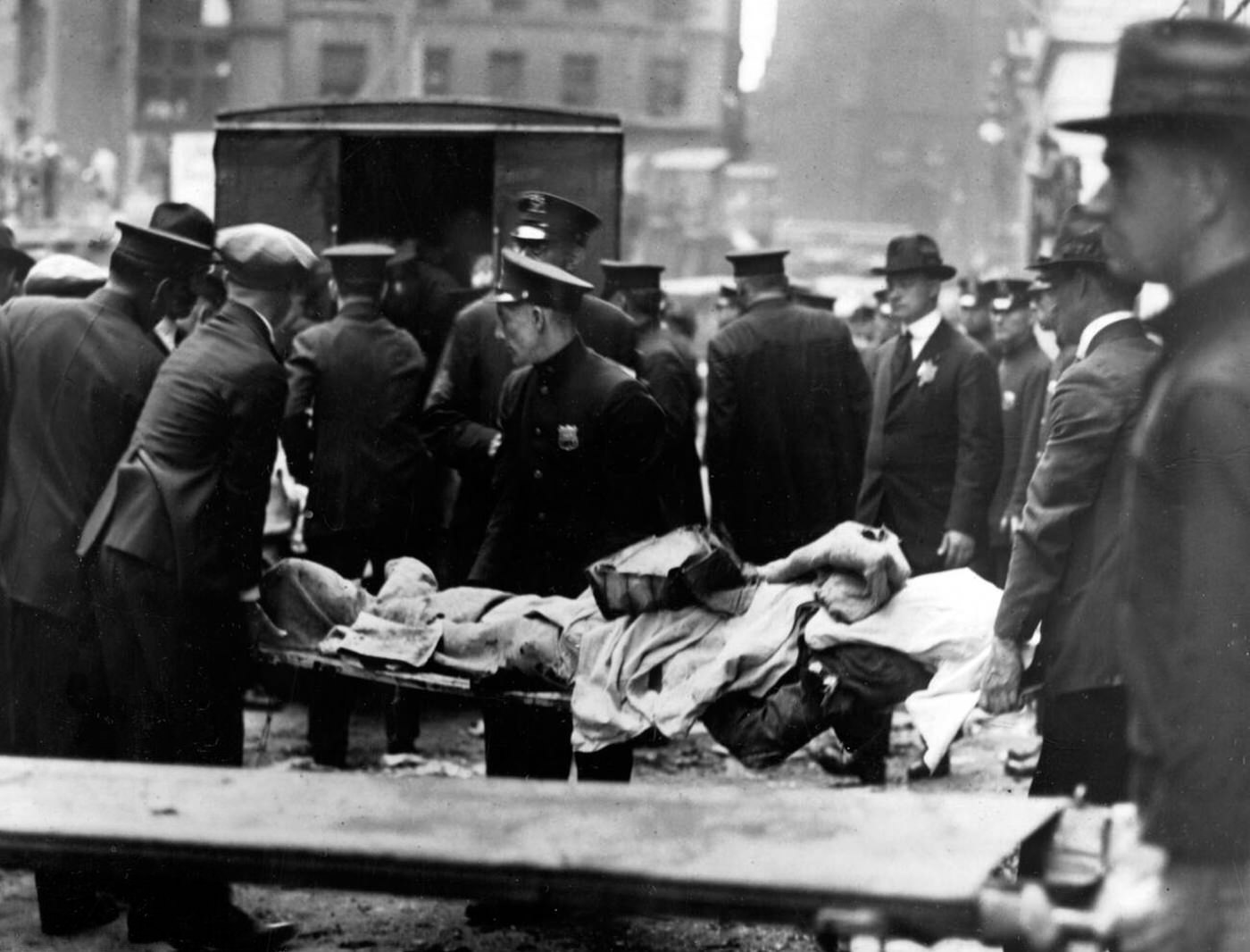On September 16, 1920, a terrible event unfolded in the heart of New York City’s financial district. It was just past noon on a busy Thursday. Workers were out for lunch or going about their business on Wall Street, one of the most important financial centers in the world. The street was crowded with people, horse-drawn wagons, and early automobiles.
Suddenly, a massive explosion ripped through the air. A horse-drawn wagon had stopped on Wall Street, right across from the J.P. Morgan & Co. building and close to the intersection with Broad Street. The wagon was loaded with explosives, and when they detonated, the force was tremendous. A deafening roar filled the narrow streets. Windows in surrounding buildings shattered instantly, sending shards of glass raining down. The explosion sent a powerful shockwave that knocked people off their feet.
The scene immediately turned into chaos. Smoke and dust billowed into the air, making it hard to see. Debris from the wagon, nearby buildings, and the street was thrown in all directions. People lay injured or dead on the pavement. Horses pulling other wagons were killed by the blast. The front of buildings like the J.P. Morgan building were heavily damaged; its stone facade was visibly scarred with pockmarks from flying metal fragments. Offices inside were wrecked by the blast wave and flying glass.
Read more
The human cost was tragic and immediate. Thirty people died at the scene or shortly after from their injuries. Nine more would die later, bringing the total death toll to 39 people. Hundreds more were injured, many severely. The injuries were often caused by shrapnel – pieces of metal packed into the bomb along with the explosives, or fragments of the wagon and its contents turned into deadly projectiles by the force of the blast. Flying glass from shattered windows also caused many injuries.
Investigators later determined that the bomb consisted of about 100 pounds of dynamite or a similar explosive. Crucially, it contained around 500 pounds of heavy cast-iron sash weights. These weights, normally used in window sashes, were intentionally added to act as shrapnel, designed to cause maximum harm to people in the crowded street. The bomb was set to explode at a time when the area was most populated.
In the immediate moments after the explosion, despite the panic and confusion, people rushed to help. Survivors began tending to the wounded, trying to clear debris, and helping others escape the damaged buildings. Police officers, firefighters, and medical personnel arrived quickly, but the scene was overwhelming. They used doors and planks as makeshift stretchers to carry the injured away. Ambulances and taxis transported the wounded to nearby hospitals.
Authorities, including the New York City Police Department and the Bureau of Investigation (the forerunner to the FBI), immediately launched a massive investigation. They sifted through the wreckage looking for any clues about the bomb and who might have planted it. They sought witnesses who might have seen the wagon or the person driving it before the explosion. The goal was to identify the bomber and understand the motive behind the attack on the heart of America’s financial district.
Investigators quickly focused on radical groups as potential culprits. The 1920s were a time of significant social and political tension, with labor unrest and fear of radical ideologies like anarchism and communism. Anarchist groups, who opposed government and capitalism, were known to have carried out bombings elsewhere. Just before the explosion, warning flyers linked to anarchists had been placed in a mailbox on a nearby street. These flyers warned of an impending event.
However, the investigation faced significant challenges. The explosion itself had destroyed much of the physical evidence related to the wagon and the bomber. Identifying the specific type of horse and wagon used proved difficult among the many similar vehicles in the city. Witnesses provided conflicting accounts in the chaos. Tracking down the person who drove the wagon to Wall Street and left it there became a complex task.
Despite years of investigation by multiple agencies, questioning many people believed to be involved in radical movements, and following countless leads, no one was ever arrested and convicted for planting the Wall Street bomb. Authorities developed strong suspicions that the bombing was carried out by Italian anarchists, possibly linked to a group responsible for other bombings, but they could never gather enough proof to charge anyone directly with the Wall Street attack.


